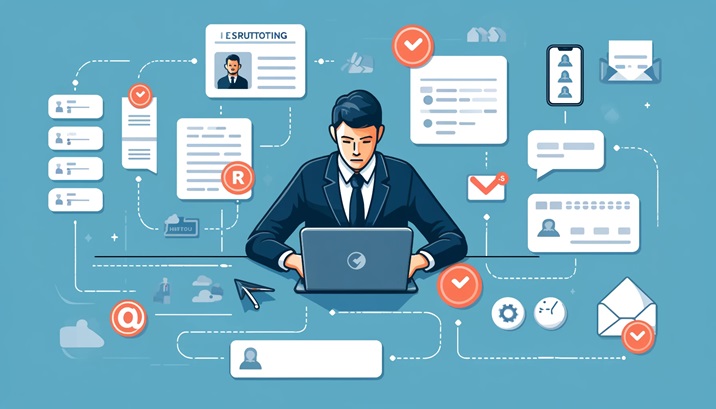
Navigating the post-application phase can be just as crucial as crafting a standout resume or acing the interview. Candidates often wonder about the best approach to following up after submitting their resumes. An effective follow-up strategy can demonstrate your enthusiasm and commitment without being intrusive. This article explores tactful and effective methods for following up on your resume submission, helping you to maintain a positive impression and stay on a potential employer’s radar.
Understanding the Importance of Following Up
Following up after sending your resume is an opportunity to reaffirm your interest in the position and the company. It shows the employer that you are proactive and genuinely enthusiastic about the opportunity. This can make you stand out in a sea of candidates who may not take the initiative to follow up, thereby increasing your chances of being remembered when decision time comes.
A follow-up is not only a reminder to the employer but also a chance to elaborate on points that may not have been fully covered in your resume or cover letter. It allows you to subtly address any potential concerns the employer might have about your application, such as availability or suitability for the role. By restating your skills and how they align with the job, you can reinforce your position as a strong candidate.
Timing Your Follow-Up
The timing of your first follow-up can significantly impact how your persistence is perceived. As a general guideline, waiting one to two weeks after submitting your resume is advisable. This window gives the employer enough time to process applications and shows that you respect their time. During this initial follow-up, you can inquire about the timeline for the hiring process and express your continued interest in the role.
If your initial follow-up doesn’t yield a response, it’s acceptable to send another message or make a call after another week or two, particularly if you haven’t received any feedback on the timeline. Keep this communication brief and courteous, reiterating your interest and your willingness to provide further information if needed. It’s crucial to balance persistence with patience, as you don’t want to appear pushy or desperate.

Choosing the Right Medium for Follow-Up
The method you choose for following up can affect the employer's perception of you. Email is often preferred because it is less intrusive and gives the recipient a chance to respond at their convenience. An email should be professional and concise, mirroring the tone of your initial application. If you opt for a phone call, ensure it’s at a suitable time of day, typically mid-morning or mid-afternoon, avoiding lunch times or the very start of the workday.
Following up through professional networks like LinkedIn can sometimes be appropriate, especially if you’ve interacted with the employer through these channels before. A brief message on LinkedIn can underscore your professional approach and interest in the role. However, this should be done sparingly and only if it feels appropriate based on your previous interactions.
Content of Your Follow-Up
Your follow-up communication should be more than just an inquiry about your application status. Include a brief statement of your qualifications related to the role, an expression of your enthusiasm for the opportunity, and a polite request for any updates they can share on the hiring process. It's also helpful to mention any recent professional achievements or relevant news that enhances your candidacy since your initial application.
Regardless of the medium, your tone should remain professional, respectful, and optimistic. Avoid sounding demanding or implying that you expect immediate feedback. Instead, frame your follow-up as a touchpoint that reinforces your qualifications and your eagerness to contribute to the team.
Conclusion
A thoughtful follow-up strategy can significantly enhance your visibility and desirability as a candidate. It’s an opportunity to show your professionalism and commitment to the role while reminding employers of your qualifications.
Following up on your resume is an art that requires as much care and strategy as the initial application process. By employing these tactful approaches, you not only keep the lines of communication open but also enhance your prospects in the recruitment process. Effective follow-up can be the key to unlocking job opportunities and forging lasting professional relationships.